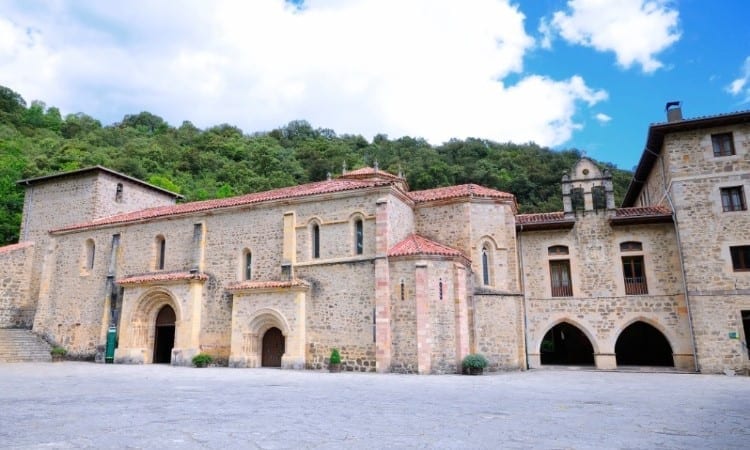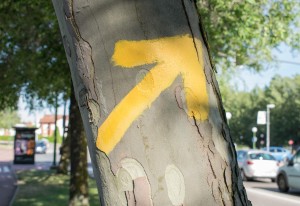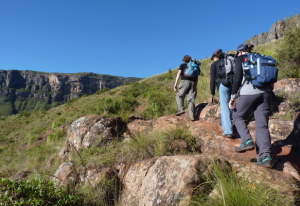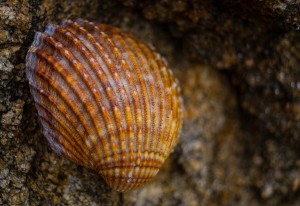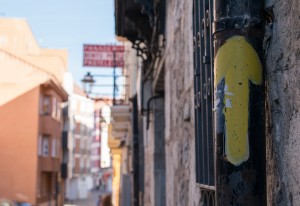Have you heard of the Lebaniego Way? The Lebaniego Way is about 73 km long, divided into three walking days. From San Vicente de la Barquera to the Monasterio de Santo Toribio, where you will be able to contemplate the amazing views of the Picos de Europa Mountains.
In Albergues del Camino we strongly recommended this route to those pilgrims with an interest on the Jacobean history. Let’s see way!
History of the Camino Lebaniego
The Lebaniego Way is a pilgrim route that first appeared in the 8th century to worship the Lignum Crucis.
The tradition says the Lignum Crucis is a piece of the cross where Jesus Christ was crucified, and it’s located in the Monastery of Santo Torbio de Liébana, in the region of Cantabria.
The Monastery of Santo Toribio is popularly known as Little Jerusalem due to the large influx of pilgrims it has received since the Middle Ages.
The Monastery of Santo Toribio was built in the 6th century. The remains of Bishop Toribio de Astorga and the relic of the Lignum Crucis were brought to the Monastery in the 8th century.
Lebaniego Way Stages
This Way is an incredible tour of 73 kilometers divided in 3 stages, in which pilgrims can walk from the coast to the interior of Cantabria. It starts in San Vicente de la Barquera and ends in The Monastery of Santo Toribio.
Stage 1: San Vicente de la Barquera – Cades (28.5 kilometers)
This first stage has a length of 28.5 kilometers. It could be a bit hard for those pilgrims who have never practice hiking or aren’t use to walk long distances. The route starts by heading towards Serdio. After passing along the Nansa River Path we reach Camijanes. Afterwards, the route passes through Cabanzón, where it is essential to stop to contemplate its medieval tower. Finally, the stage ends in Cades.
Stage 2: Cades – Cabañes (30.53 kilometers)
In this second stage we will have to walk two kilometres more than in the previous, 30, 5 kilometres. Leaving Cades we will have to go to La Fuente where we can find the Church of Santa Juliana, declared of Cultural Interest. Passing by Burió and Collado de la Hoz we descend to Cicera. From Cicera we will go to Lebaña where we will cross a forest of ancient oak trees. From this place we will go to Santa María de Lebeña, pass through Allende and go up to Cabañes, where we will finish the stage.
Stage 3: Cabañes – Santo Toribio (13.7 kilometers)
This stage is the shortest one and the last of the route. It’s only 13,7 kilometres long. From Cabañes we have to go to Tama, where we will find its Romanesque church. From Potes we’ ll go to The Monastery of Santo Toribio.
Credential and Jubilee Year of the Lebaniego Way
The Camino Lebaniego has its own Jubilee Year, just like the Camino de Santiago. The Holy Year takes place when the festivity of Santo Toribio (16th of April). During the Holy Year, the Door of Forgiveness is open to receive all pilgrims.
This walk has also its own Pilgrim Passport, called the Lebaniega.
The Lebaniego Way is official Jacobean route since 2015. For this reason, there is an increasing number of pilgrims each year who choose this walking trail.
The Jacobean routes in Cantabria
Cantabria is the only region in the world with the passage of two pilgrimage routes. One of them is the North Way, which has a route through Cantabria. The other one is this, the Lebaniego Way, which begins and ends in this community.
Remember that in our social networks we will keep you up to date with all the news that arise, follow us on Facebook or Instagram!
In addition, we encourage you to share with us your experience traveling the Camino de Santiago on these social networks by tagging us or including the hashtag #alberguesdelcamino in your publication. We look forward to your photos!










